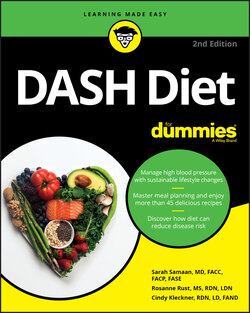Читать книгу DASH Diet For Dummies - Sarah Samaan - Страница 13
Exploring the origins of DASH
ОглавлениеThe acronym DASH comes from a landmark 1997 clinical trial (a well-controlled human research study) that tested the effects of specific types of food on blood pressure. Instead of just telling people with hypertension what to avoid, the study sought to gauge the effects on blood pressure of a variety of readily available, inexpensive whole foods known to support good health.
Study participants following the DASH diet experienced impressive results: By eating a diet rich in fruits, vegetables, whole grains, and low-fat dairy foods and low in saturated fat, they reduced their blood pressure just as much as if they had taken a single prescription drug. The drop in blood pressure was evident within two weeks, even though the participants were on the DASH diet plan for eight weeks. DASH researchers estimated that the improvement in blood pressure could mean a 15 percent drop in heart attack risk and as much as a 27 percent reduction in stroke risk.
It’s worth noting that study participants who followed the DASH diet minus the dairy also reduced their blood pressure, but the decrease was less. That’s why including low-fat dairy is recommended for maximum effectiveness.
Having confirmed that healthy and delicious food could lower blood pressure just as effectively as a pharmaceutical drug, the DASH researchers next turned their attention to salt. The study, known as DASH-Sodium, found that by cutting salt to about 1,500 milligrams daily, blood pressure improved even more than with DASH alone. In fact, even a little reduction in salt made an important difference in blood pressure. The effect was seen in people with borderline high blood pressure, as well as in those with true hypertension.
For a deeper dive into the science behind the DASH study, see Chapter 2. Less interested in the science than in finding advice on how to create a healthy diet plan that works for you? We help you out in Chapter 4.
